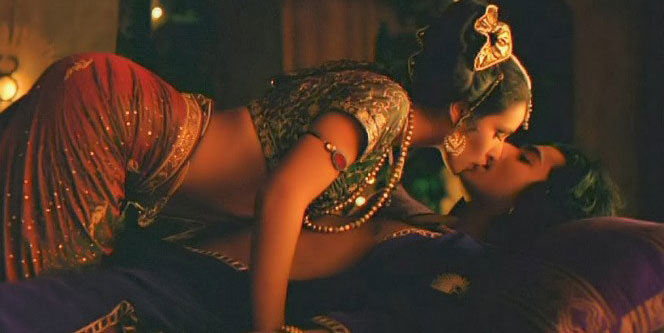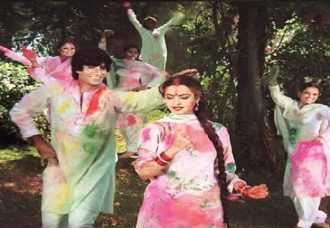The history of cinema backs up unto 1890. Like in theatre, cinema also had a period when films were tabooed for women. During this period, women were not even allowed to play the role of the heroine on screen, and it was men who dressed up as women to do the same. Later on, following much criticism and debate, women started to appear on screen. Cinema being considered as a lesser medium than drama was another reason for this condition. The role of women on screen is also a much discussed issue, of using women as mere objects or trophies’. This trend took women to acting, singing, choreography and so on, but the decision making positions were still in the hands of men.
Acting, singing, choreography or fashion design, all play integral parts of films. But on considering the presence of women in the industry these aren’t addressed considering the decision making power. Decision making power was still vested on the hands of men. They decided what and how the audience should see. Like the post modernist argument of three truth-yours, mine and the truth, when it came to cinema, the truth represented on screen was the man’s truth. A complete perspective of his world was represented on reel.
Film can be considered one of the most democratic industries in the society where freedom of thought and expression was exercised at a larger scale and to a larger audience. As democracy remains taboo for women, so was it in the case of film industry. The reason for the lack of woman in the industry was not their lack of expertise in technical skill or knowledge. Gender politics played a significant role in film industry as well, trying to alienate women from the field. Another fact that is to be noted is that, even women directors have tried to dissociate from the idea of their film to be ‘women cinema’ considering the chances of marginalization and ideological controversies. Hence they prefer their film being called a ‘human beings’ work’ rather than a ‘woman’s film’. the argument gains more strength in a society where the word ‘feminist’ remains an offensive word used against the women.
On attempting to define women’s cinema, on a broader scale, it is the film made by women. Film being an industry has various levels or work starting from the initial conceptualising to the final level of reaching the theatres and the amount of labour and labourers involved in each of these strata are immense, each of these roles have significant importance in cinema, but on speaking about women cinema, the primary focus is on areas such as direction, script writing, cinematography and to an extent editing as well, considering their impact on visual impression of the film. this largely deals with the women’s truth, her perception and perspective. Her angle of representation of the same thing which we had been viewing in his perspective throughout.
Independent women also liked their films to be regarded ‘just films’ rather than ‘women films’ as their feared their identity as women. Women films referred to here are not films where women play the protagonist, but where stories are told the way the woman wants it to be said, taking into account her views of viewing the world. Here references are also made to Male Gaze, where women, who do not have homosexual orientation still gets excited seeing a naked or scarcely dressed woman on screen, rather than a man in the same condition. And this tendency is explained through our media exposure and education.
Media has great role in shaping our culture and thereby the society. Our links with the media has become so deep rooted that we sometimes even fail to recognise its influence in our day to day activities. The above phenomenon can be looked upon through the same. We have been exposed to the perspective of life by itself. This in turn is the major reason of objectification of women in a country where we have dominance of heterosexual community and also significant amount of female audience. Even the primitive text and idealised sexual text Kamasutra waited for a woman in the 21st century to have it changed to the women’s perspective. Likewise in cinema, even when sexuality was represented it was only to create an adrenaline rush or boost up of androgens. When her feelings were silenced for about a century, women almost gained evolutionary changes and adaptative behaviour where she found herself means to console her emotions. In a way, this was be interpreted as, women never got to watch films. Every time women walked into screens to watch a film, she was automatically being transformed into some form of man to suit to the conditions and medium. A narrow minority that resisted this transformation were the people who felt the urge for a change or reformation of the existing scenario. The feeling that probably came out of the feeling that they are women, and they too have existence, occupy space and have a definite and independent intellect – the true essence of feminism.
On taking into account women cinema, what women are actually trying to do is creating an alternative language. On considering film as a language or text, the language used to construct it is evidently phallocentric in perspective. The advent of women into the industry can be marked by the self awareness that the language we had been exposed to and using all this while was typically male. Over the years, women have attained some amount of bisexuality considering the media influence and orientation. We see ‘straight’ women getting ‘excited’ on seeing a scarcely dressed woman on screen rather than a man. Women tend to think and act the way men do, especially in terms of cinema.
This is a juncture where an attempt is to be made to see what ‘she’ wants to see, hear, feel and experience. Throughout we have seen things through the perspective of a man, making even women audience feel the need for a sensuously dressed woman out at night, to be raped.
Being a woman is my first attraction, motivation and need for doing this term paper. Moreover, having seen films seriously this term paper is my attempt to decode the gender politics in the film industry. Though the history of women in cinema hold up to the history of film, we still fall short of women names of discussing prominent icons in cinema. The term paper is feministic perspective seeing why women are staying away from the industry, the representation of women within the industry and how women cinema are different in perspective. Just because a film was made by a woman it is not implied that the film is to support or address women. Some of the works of prominent women in the industry were evidently patriarchal and results of the transformed man in them. To study this trend, world cinema is cut down at each level to finally reach at the prime focus, Malayalam cinema.
Film is one amongst the top popular medium for mass communication. Rather than its reach, its appeal amongst the people makes the medium stand out. The impact of cinema over the society made the medium be used as strong tools for propagation. Author Baldoon Dhingra quotes Prime Minister Nehru’s speech in a 1963 report for the United Nations Educational Scientific and Cultural Organization, which says, “…the influence in India of films is greater than newspapers and books combined.” According to S C Noah Uhring of The University of Essex, UK, ‘the narrative and representational aspects of film make it a wholly unique form of art.’ From a medium, cinema has evolved to become an industry, an emotion and a culture. Film and its further break downs such as stars and icons are cultural and emotional entities in India. This is what makes people build temples for the actors and worship them as deities.
India is one of the largest producers of films. The multi lingual industry has also managed to become the largest industry in terms and ticket sales and number of films produced. The acclaim Indian cinema has worldwide is also notable. More than 20% of Indian cinema comes under Bollywood, which is the Hindi film industry, centered in Mumbai. The other major industries include Tollywood (Telugu), Kollywood (Tamil), Mollywood (Malayalam), Tollywood (Bangla) and Sandalwood (Kannada). Indian cinema was not only known for its poplar cinema of ‘mast and masala’. Indian cinema had a much acclaimed critical concern and international audience from a very long time. Realism and expressionism in Indian cinema is also well discussed.
It was Jacques Derrida. a French philosopher who coined the term phallogocentrism, which in turn refers to the privilege of masculine in the construction of meaning. His major area of concern was semiotic analysis known as deconstruction. Deconstruction deals with analyzing and breaking down codes of mainstream cinema, aiming to create a different relationship between the spectator and dominant cinema. Feminism can be defined as a collection of movements and ideologies aimed at defining, establishing and defending a state of equal political, economic, cultural and social rights for women. This was often misinterpreted as a class of people who stood against men, and this conception led the dominant men to strictly oppose the idea. The feminist theory paved way for women in cinema or more precisely feminist cinema or feminism in cinema. This happened during the late 60s and early 70s.
Patriarchy on the other hand is the system where the society is organized around male centric figures. It was the construction of a social structure by which male dominance was asserted through idea, principles and with respect to India cultures as well. I barely implied male hierarchy and female subordination. Feminist theory proposed the concept of patriarchy considering its deep rooted nature in the society and the only left option against it being separatism. But at a later stage there was a setback to its concepts as well when women started being patriarchal. By imbibing on ideologies of feminism and domination of women, women started taking up roles of men, or in other words tried replacing or behaving as men. This did not help the ideologies of feminism but in turn back fired. Evan when women entered media, this patriarchy was evident in them that was reflected even on the films they created. Women failed to make films that could only be made by women, but attempted to replace men, and do job that could have been possible by men themselves.
The very fact that only 2% of cinematographers working in American film were women distinguishes the maleness in seeing. American cinema has popularity around the world and this fact implies that what the world had been seeing is what the a male wanted to see. It dealt with his curiosities and interests leaving her fascinations unaddressed. A recent research that happened in America also suggests that women accounted for only sixteen percent of all directors, producers, cinematographers and editors working on the top 250 grossing films of 2012. Considering the hierarchy and social structure this is a significant number but otherwise the numerical is too scarce for pride. These numbers are indications of persistent discrimination and exclusion of women from the industry.
One major concern about women behind screen is how the content on screen affects the life off screen. Stereotypes enforced on women are immense. For women to be part of industry there are immense stereotypes women have to work against. Content established on screen has made it hard for women to be part of the industry and this in turn affected the content that further came on screen.








